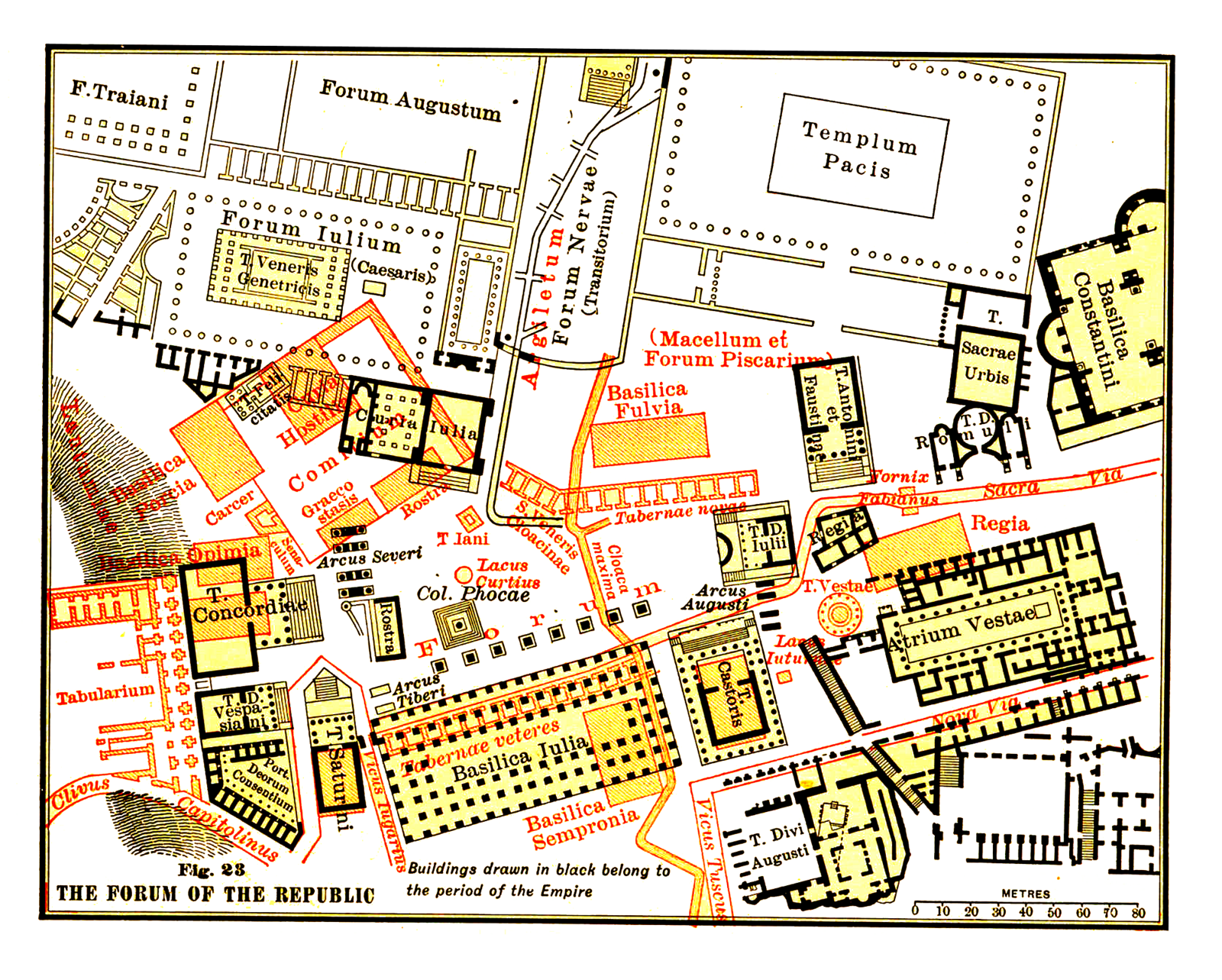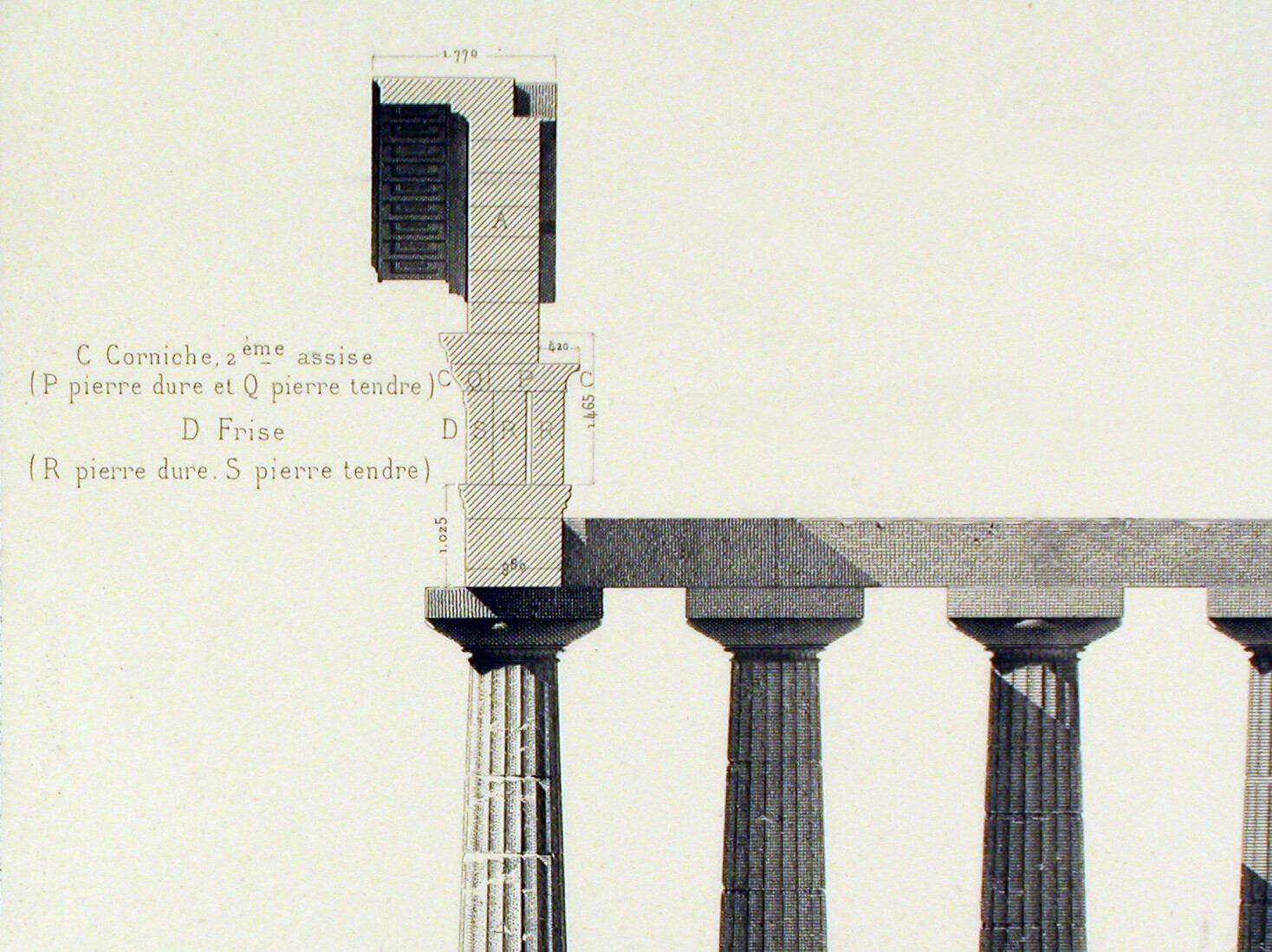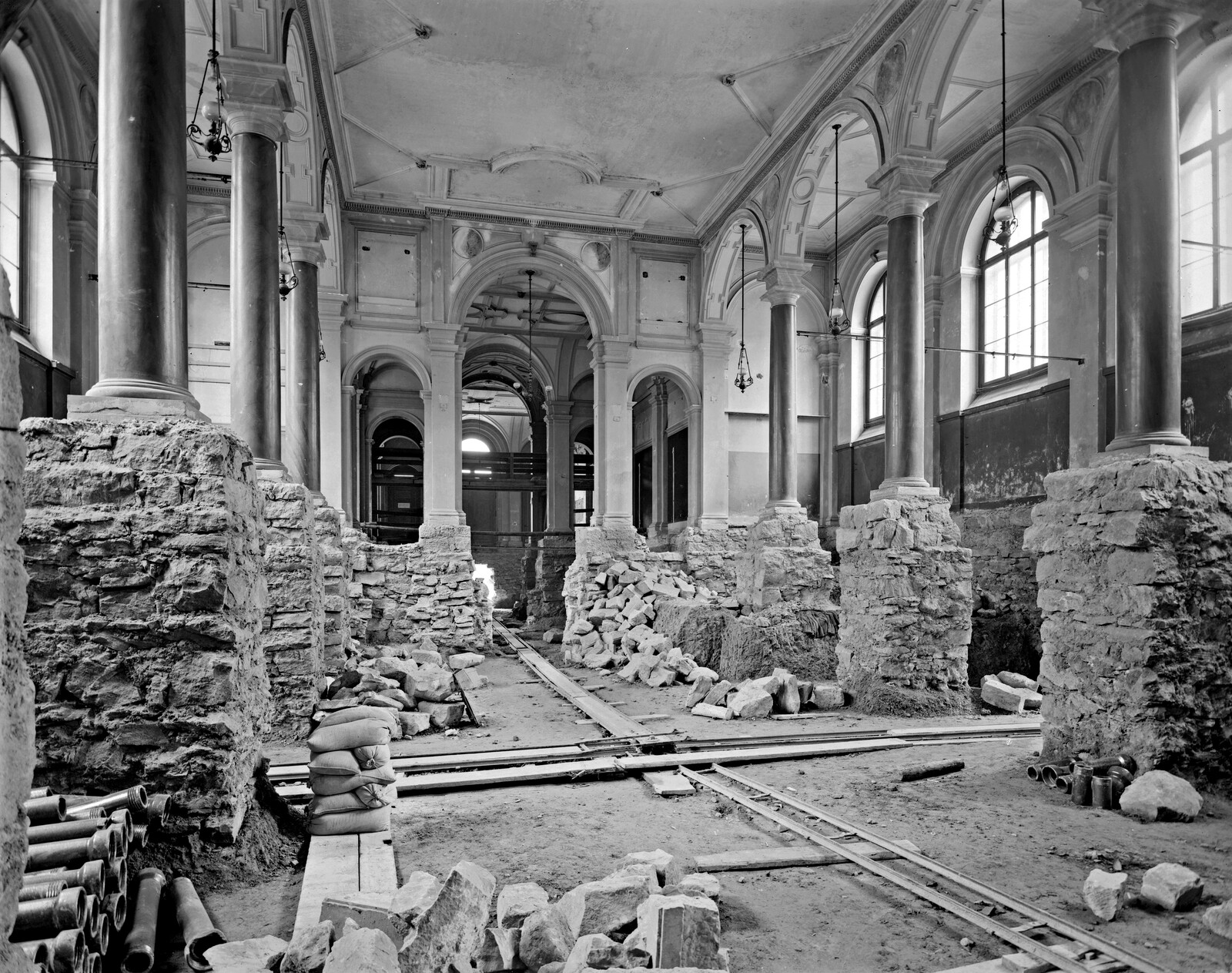There is a minor, slightly ragged tradition among historians that speaks of the quest for a “usable past.” The expression, which was coined around 1915 by the American literary critic Van Wyck Brooks, is associated most commonly with those who, like Brooks, bear a (sometimes vexed) relation to philosophical pragmatism. It doesn’t circulate much in architectural discourse, despite the fact that the dexterous Lewis Mumford was among Brooks’s closest friends. Although a “usable past” can mean many things, we can take it at face value to denote an account of past events relevant in some way to confronting present challenges, whether these challenges are artistic or practical in nature. Even then, its seeming straightforwardness is disarming, not least because buried in the expression’s origins is the ideal of a specifically national past—for Brooks, as for Mumford, an American one—made relevant to a polity that was at the time beginning to flex its cultural, political, and economic muscle.
This is not to say that all “usable” pasts are national ones, or that the very idea of usefulness they contain is necessarily tainted by brazen instrumentality or self-interest. But in the cultural stratum that mainly concerns us here, calls to make “history” more relevant to “architecture,” especially via the unspecified agency of “theory,” come more often than not with specific interests in mind. It may therefore be useful to reply from a perspective that considers the “uses and disadvantages of history for life,” where “life” replaces interest, whether artistic or practical. This expression, which belongs of course to Friedrich Nietzsche, immediately begs questions like “Whose life?” “Where?” and “What kind?” Nietzsche’s famous essay, which first appeared in 1874, largely avoids these, concentrating instead on the limitations of monumental, antiquarian, and critical history when measured against the affirmative, Dionysian abandon of “unchained” life-as-lived.
To a certain extent, the “life” Nietzsche had in mind was also a national one, concerned as he was with aligning the German “spirit,” as he called it, with Hellenism. But mostly, he sought to overcome what he took to be the vanity, hypocrisy, and indifference of those for whom the past was a dead letter and who passed judgment on it accordingly. “Only he who constructs the future,” Nietzsche argued, “has a right to judge the past.” Although this “living” past and the “usable” one share a number of progenitors, most notably the philosopher-poet Ralph Waldo Emerson, the two diverge considerably when it comes to facing the future. Where one seeks release, the other seeks service. Still, on either side of 1900, by which time research had replaced Bildung as the principal mandate of the great universities, new and old, on either side of the Atlantic, both attitudes toward the past took historical consciousness, underwritten by scholarship, as a given. Though Nietzsche did speak of “suprahistorical” or “unhistorical” antidotes to the historicist malaise, neither a living past nor a usable one quite anticipates the possibility of a time with no past—and perhaps, no future—at all.
I am not referring primarily to those blinkered announcements, in the roaring 1990s, of the arrival of a “posthistorical” age. Rather, I have in mind two emergent phenomena that mark our present: the coupling of ferocious, seemingly irreversible socioeconomic inequality with nationalist or nativist regression, and the looming apocalypse of climate change. In ways both subtle and profound, the climate question has already begun to reshape our sense of time; emergencies are becoming normal as a slow, trans-generational endgame dressed in the hallucinatory colors of computer modeling moves inexorably from scenario to fact. Less obvious is how this endgame meets the inequality-plus-nationalism equation, which joins new strategies for just-in-time expropriation with what amounts to a race war. Here, the historical optic differs; a mythic past is summoned as a dialectical companion to implacable dispossession, and equally, as a means to legitimize scapegoating, oppression, and enforced exclusion.
But the differences don’t run all the way down. Though both phenomena are processes, and as such indicate that it’s not quite over yet, we are beginning to see their convergence in a narrative of adaptation, resilience, and accommodation. According to this narrative, for example, the usability of the architectural past is limited to supplying models of ecological balance, philanthropic beneficence, or humane mutuality. Or, on the artistic level, to supplying a catalogue of floating forms that only now can properly be called “postmodern,” in the sense of fully exchangeable, value-free abstractions. Missing in both cases is a strong sense of causality and responsibility, and hence, of past and future change. We have not yet learned to correlate the smoke coming out of modernism’s archetypal factories with rising waters and sinking lives. While it is easy enough to dismiss simplistic, linear finger pointing, it is much more difficult to ask: What happened?
This is the historian’s question, richly multivalent and ambiguous. Rather than confine architectural history (and theory) to the humdrum task of servicing a sclerotic profession, then, we might consider reversing the order to ask how architecture and its histories may help answer such a question. What, in other words, are the uses and disadvantages of architecture for history, when by “history” we mean understanding—and confronting—long-term processes like those described above. Among other things, this could well mean historicizing the category of architecture itself by reassessing its entanglements, at different times and in different places, with engineering on the one hand and the fine arts on the other. What did this division of intellectual, cultural, and technical labor contribute to building (or rebuilding, or unbuilding) a world of empires, revolutions, and carbon-fueled “progress”? Why take architecture for granted as a vessel to be filled in with historical content, when understanding its very consolidation can tell us so much more about where we are today, where we might be going, and why?
If this amounts ultimately to an updated version of the critical history with which Nietzsche was dissatisfied, it is a necessary step. To be sure, when historical scholarship remains content with negative prophesy, it does little to affirm the life to which architecture testifies in its various guises. Here we would do well, however, to consider how the tables have turned since Nietzsche’s day. Despite appearances, today’s Wikipedic world does not suffer from a debilitating excess of historical consciousness, the drumbeat of overconfident nations; rather, it suffers from an equally debilitating deficit of historical consciousness. Ironically, this deficit does not derive from any shortage of historical information, but from an informational deluge that, while felicitously democratizing access and voice, tends also to reduce all past events, actors, and objects to equivalence or interchangeability. This is history repositioned as chronology, a one-thing-after-another timeline set against the background noise of the present.
To this march of “homogeneous, empty time” (as Walter Benjamin once put it) the powerful and the dispossessed reply with deadly, uneven contests over meaning. Religions rise and statues fall. It would be a mistake to interpret these contests as merely compensatory or revisionist. In and of themselves, they are historical evidence—evidence, that is, of a straining toward meaning, a struggle to interpret the present that is most easily connected with the familiar loss of “grand narratives” and other forms of soothsaying. But the struggle over meaning is more than that; it is historical evidence of the work of history. For the alleged loss of agreed-upon historical meaning is the grandest narrative of all, the story to end all stories. On the one hand, then, is the problem of too much historical information and too little history; on the other, a shared historical narrative too eager to announce the end of shared historical narratives.
The only real alternative is to build a clear-eyed understanding of life lived historically, in the present. In the narrow context of our particular discipline and its discontents, historicizing the category of “architecture” itself could begin by looking in the mirror and asking: What other forms of practice, what other ways of making meaning have relied so heavily on historical narrative for their legitimacy, such that historians are regularly called upon to provide an instruction manual for an entire profession, from corporation to boutique? Surely there are other usable architectural pasts than the one that traces an arc from style to branding, or from social engineering to lifestyle management. How did this come to be, this unholy alliance of service industry and star factory?
Architectural historians should beware, however, that asking such questions risks biting the institutional hand that feeds them. For what other profession takes its history so seriously, as narrative? How many law schools, let alone medical schools, list anything like the increasingly ubiquitous “global survey” among their required courses, for better or for worse? The significant presence of historians in architecture schools, especially in Europe and in the United States, is due largely to earlier expectations of an uninterrupted supply of “precedent” from history lecture to design studio. As these expectations fade under the twin pressures of technocratic anti-intellectualism and online image bazaars, the role of historians in the professional environment becomes more ambiguous. The most convincing response is to redefine the required study of architectural history in professional schools as equivalent to requiring non-specialist humanities courses for computer science majors. Especially at the introductory level but applicable throughout, the focus should be on nurturing historical consciousness—an awareness of the historicity of one’s world and of one’s actions therein—rather than on erecting foundations or scaffolds for practice. This applies also to the field’s art-historical wing, which has traditionally shored up patronage by introducing both elites and entrepreneurs to architecture’s taste cultures, the latter having now largely bypassed the undergraduate slide lecture and gone straight to Instagram.
Meanwhile, changing mediascapes have opened architectural history to the wider humanities through shared bibliographies and the interdisciplinary circulation of discourse and personnel. When we write history in architecture today, we do not necessarily take for granted that its readers will be architects, future architects, or even art historians, a reorientation that poses considerable challenges for authors and publishers alike. Investigating the uses and disadvantages of architecture for history quite likely entails forcing architecture, architects, and their world onto a historical stage already crowded with more familiar actors and agents. One increasingly common way to do this is by emphasizing architecture’s infrastructural properties, the background work done by the built environment, its representatives, and its technologies in shaping social and imaginative possibilities. Less common is inserting aesthetic concerns directly into the sociotechnical fray, to assess the infrastructural functioning of the artwork itself.
Either way, inquiry along these lines shows architects working side-by-side with other techno-political experts to construct the modernity we have inherited, in a division of labor that has a history of its own. Whether cast in the singular or plural, running along broken lines from east-to-west-to-north-to-south, that modernity has, broadly speaking, exchanged a teleological sense of time for an entropic one. The engine of inevitable, irreversible progress or “development” turns out to have been driving on a crash course toward civil war and planetary breakdown. This breakdown has, in turn, acquired its own sense of inevitability and irreversibility. Encouraged by the resigned stasis of “resilience” and “adaptation,” the inequality industry and carbon profiteers have merged. To the epochal question that echoed across the last century—“What is to be done?”—the company spokesperson confidently replies: “Nothing.”
In this context, any serious effort to reflect upon and address the linked tragedies of socioeconomic and ecological devastation cannot afford to choose between a usable past and a living one. Faced with the specter of irreversibility on two fronts, historical consciousness atrophies, just as it does when overwhelmed by an entropic flood of data. Into its place, with teeth bared, steps the forward-facing pair of cynical denial and self-serving myth. Disguised as endings, these avatars recite narratives that do not end. Our historical task is therefore to reclaim the future by reclaiming the past. Instead of worrying about what history can do for architecture, it is time to concentrate on putting architecture back into history.
History/Theory is a collaboration between the Institute for the History and Theory of Architecture (gta), ETH Zürich and e-flux Architecture.






















